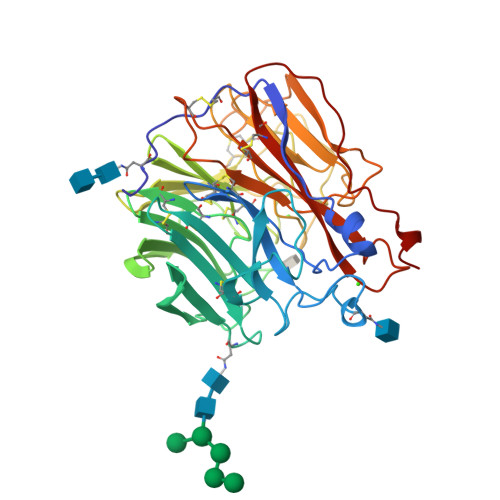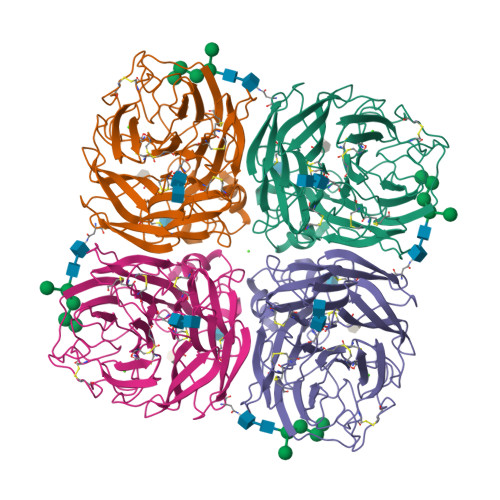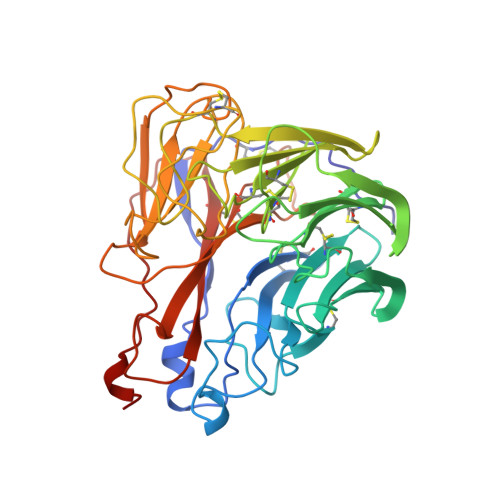Drug design against a shifting target: a structural basis for resistance to inhibitors in a variant of influenza virus neuraminidase.
Varghese, J.N., Smith, P.W., Sollis, S.L., Blick, T.J., Sahasrabudhe, A., McKimm-Breschkin, J.L., Colman, P.M.(1998) Structure 6: 735-746
- PubMed: 9655825
- DOI: https://doi.org/10.1016/s0969-2126(98)00075-6
- Primary Citation of Related Structures:
2QWA, 2QWB, 2QWC, 2QWD, 2QWE, 2QWF, 2QWG, 2QWH, 2QWI, 2QWJ, 2QWK - PubMed Abstract:
Inhibitors of the influenza virus neuraminidase have been shown to be effective antiviral agents in humans. Several studies have reported the selection of novel influenza strains when the virus is cultured with neuraminidase inhibitors in vitro. These resistant viruses have mutations either in the neuraminidase or in the viral haemagglutinin. Inhibitors in which the glycerol sidechain at position 6 of 2-deoxy-2,3-dehydro-N-acetylneuraminic acid (Neu5Ac2en) has been replaced by carboxamide-linked hydrophobic substituents have recently been reported and shown to select neuraminidase variants. This study seeks to clarify the structural and functional consequences of replacing the glycerol sidechain of the inhibitor with other chemical constituents. The neuraminidase variant Arg292-->Lys is modified in one of three arginine residues that encircle the carboxylate group of the substrate. The structure of this variant in complex with the carboxamide inhibitor used for its selection, and with other Neu5Ac2en analogues, is reported here at high resolution. The structural consequences of the mutation correlate with altered inhibitory activity of the compounds compared with wild-type neuraminidase. The Arg292-->Lys variant of influenza neuraminidase affects the binding of substrate by modification of the interaction with the substrate carboxylate. This may be one of the structural correlates of the reduced enzyme activity of the variant. Inhibitors that have replacements for the glycerol at position 6 are further affected in the Arg292-->Lys variant because of structural changes in the binding site that apparently raise the energy barrier for the conformational change in the enzyme required to accommodate such inhibitors. These results provide evidence that a general strategy for drug design when the target has a high mutation frequency is to design the inhibitor to be as closely related as possible to the natural ligands of the target.
Organizational Affiliation:
Biomolecular Research Institute 343 Royal Parade, Parkville, 3052, Australia. jose.varghese@bioresi.com.au





















